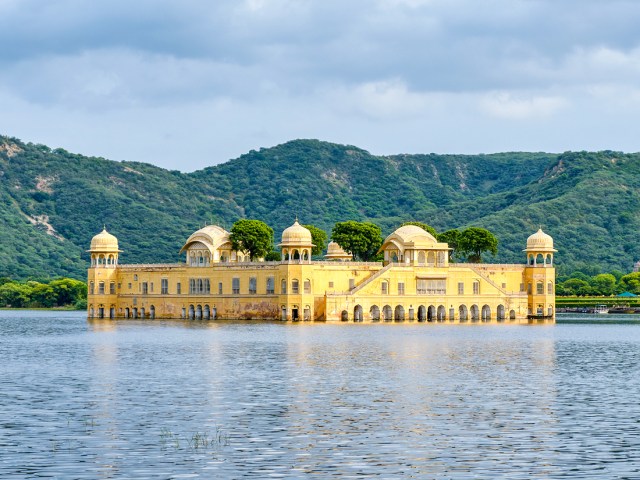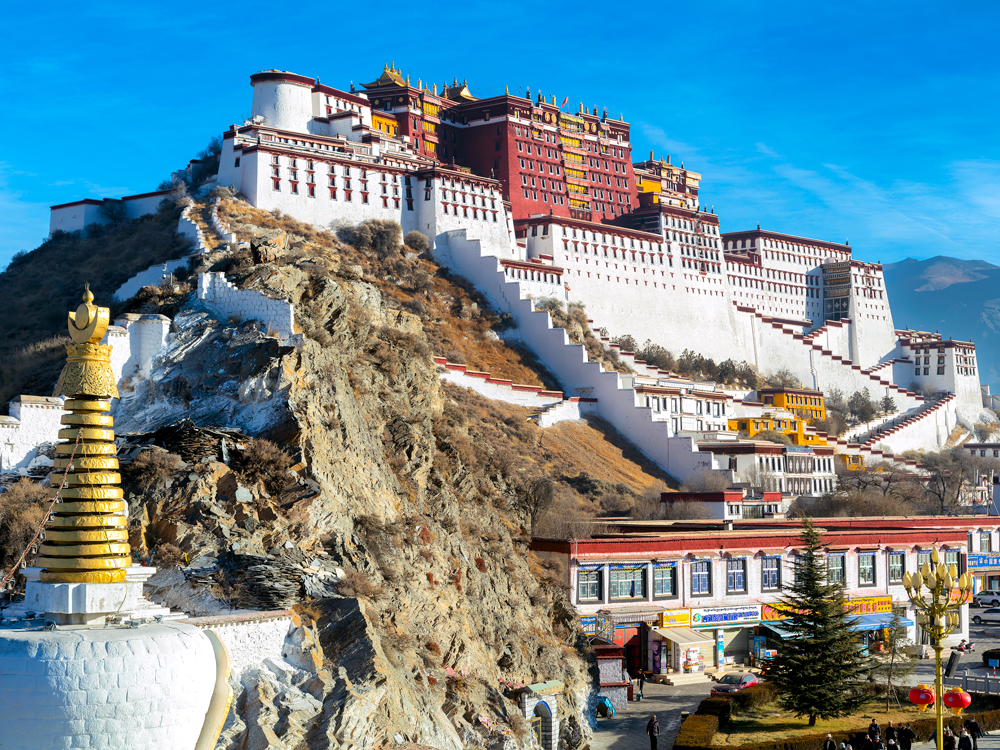If you’re looking to admire beautiful architecture, visiting a palace is tough to beat. Breathtaking for their opulence and scale, palaces were built for monarchs, emperors, and other powerful rulers over many centuries. In many cases, they have retained their former grandeur to the delight of today’s tourists. From Spain to Seoul and India to Istanbul, here are seven of the most striking palaces you can visit around the world.
Versailles – France

The Palace of Versailles was the famed residence of French rulers, perhaps none more infamous than Louis XVI and Marie Antoinette. Versailles began life in 1623 as a modest hunting lodge, on a site chosen situated to take advantage of the boars and stags who roamed the surrounding woods. However, “modest” is not a word that would be applied to the Versailles you can visit now. The sprawling property stuns with precisely ordered formal gardens, woodland parks, Marie Antoinette’s former estate (Le Petit Trianon), and the grand palace itself.
While Versailles has been operated as a museum since 1833, the palace is no longer deserted after hours. In 2021, a five-star hotel opened in a historic building on the grounds, where mere mortals — for the princely sum of around $2,000 USD per night — can spend the night at Versailles. The 13 guest rooms come with perks for the royally curious: Guests are shown parts of the palace not seen by the touring public. After closing time and in the early morning before the gates open, interested hotel guests are ushered on intimate tours of the grand halls and royal chambers, and may freely wander the gorgeous, 2,000-acre Orangery Gardens.
Jal Mahal – India

In northwest India, land of the Maharajas (“great rulers”), the Rajput dynasties constructed a series of fairyland forts, palaces, and opulent structures beginning around the 16th century. In Jaipur, their capital city known as “the Pink City” for the rose-hued terracotta paint that predominates, you’ll find the spectacular Jal Mahal (“Water Palace”). Originally built in 1699, it may have served as a lodge for royals hunting the abundant waterfowl that made Man Sagar Lake their home.
While today the palace’s ornate carvings reflect gracefully back in the waters of Man Sagar, the lake at the time of construction was little more than a damp depression — with water accumulating only after days of heavy rains. The four lowest floors of the Jal Mahal are now underwater, after a later king decided to construct dams in the 18th century. Unfortunately, the government closed the mysterious palace and the waters it floats to visitors, but tourists can stroll the edge of the lake and enjoy the architectural grandeur from afar.
Topkapi Palace – Istanbul, Turkey

Starting with Mehmed the Conqueror in 1478 and for nearly four centuries thereafter, dozens of Ottoman sultans reigned from this sprawling stronghold — with anywhere between 1,000 to 4,000 fellow palace inhabitants at a time. The ornate grounds grew and evolved as they passed from one ruler to the next, so one of the most intriguing elements of any visit to the modern-day museum is the array of esthetics on display, from Islamic to Ottoman to European.
But arguably the most intriguing element of all — perhaps because it used to be forbidden to everyone but a select group — is the harem. A world unto itself, this private residential section of the palace boasts two mosques, nine baths, and a hospital — altogether, there are more than 300 rooms. Among the most notable are the peach-colonnaded Court of the Concubines, the heavily gilded Imperial Hall, the airily white Baths of the Sultan and the Queen Mother, and — the pièce de resistance — the Privy Chamber of Murad III.
Pena Palace – Sintra, Portugal

An hour outside Lisbon, the Cultural Landscape of Sintra, a UNESCO World Heritage Site, comprises a number of colorful castles and palaces, but Pena Palace is the best known. Instantly recognizable by its bright red and yellow towers overseeing the surrounding area and out to the sea, the palace is a popular cover photo for many guidebooks.
Construction began in the Middle Ages, and a report that the Virgin Mary had appeared on the hill prompted the addition of a chapel. King Ferdinand purchased the monastery and surrounding holdings, and the castle as it appears today was completed in 1854. It’s a fantasy of graceful arches, intricate marble carvings, and dazzling tile mosaics, combining architectural elements from many styles. Don’t miss a walk around the walls to admire the lush gardens.
Gyeongbokgung Palace – Seoul, South Korea

When the world’s biggest pop group, BTS, kicked off a Tonight Show takeover in front of a dazzlingly illuminated Korean palace last year, the landmark no doubt shot to the top of millions of bucket lists. But while the gorgeous visuals from that BTS performance alone might make the average fan want to see Gyeongbokgung Palace in person, the sheer age of the site seals the deal for history buffs.
Built in 1395 as the grandest of the Joseon Dynasty’s five Seoul strongholds, the palace has gone through various cycles of destruction, abandonment, and rebirth. It now blends the few original elements with lovingly reconstructed ones to stunning effect. Beyond wandering the mountain-backed grounds, you’ll want to visit the two onsite museums, the National Palace Museum of Korea and the National Folk Museum of Korea, both of which offer a fascinating insight into Korean history and culture.
Alhambra – Granada, Spain

A unique fusion of Muslim and European influences, this 13th-century palace has gone through several iterations over the centuries. La Alhambra was first built by a Moorish king; the Moors were a North African Muslim group who inhabited various parts of Spain for about 800 years. The royal residence and fortress overlook the valley below, making it the ideal place for a military leader to reside.
The architecture of the Alhambra is extremely ornate, and the builders made it their goal to have every surface covered in detail. Muslim tradition doesn’t allow for artistic representations of people, so there are poems artistically inscribed on columns and arches, as well as stylized flora. The tile mosaics are another impressive highlight of the Alhambra, showcasing bright colors and stunning patterns. Under the Catholic monarchs, Charles V demolished part of the fortress to build his own palace, called Charles the V Palace. These connecting palaces mean visitors can see a variety of architectural styles and influences all in one place.
Potala Palace – Tibet

Making its way up Marpo Ri Hill in Lhasa, Tibet’s Potala Palace is all but guaranteed to take your breath away from miles around. Potala Palace, which served as the winter palace for the Dalai Lama until 1959, is the main symbol of Tibetan Buddhism. When visiting the site, you’ll notice both the White and the Red Palaces. The Red Palace is the later addition, built on top of the White Palace. An impressive Buddhist monastery already existed at this location when construction of the palace began in the seventh century.
Given that this palace has stood on this hill for more than a millennium, it certainly deserves its spot as a UNESCO World Heritage Site. Now that the Dalai Lama no longer resides here, the palace acts as a museum. People come from far and wide to see the site, but preservation is of concern. The ancient materials, and even the restored sections, can’t handle the amount of foot traffic that tourism and religious pilgrims could bring. To counteract this, China enacted a visitor quota to protect the palace. The quota has changed over the years as modernization has provided the area with even more access.
More from our network
Daily Passport is part of Inbox Studio, which publishes content that uplifts, informs, and inspires.
















